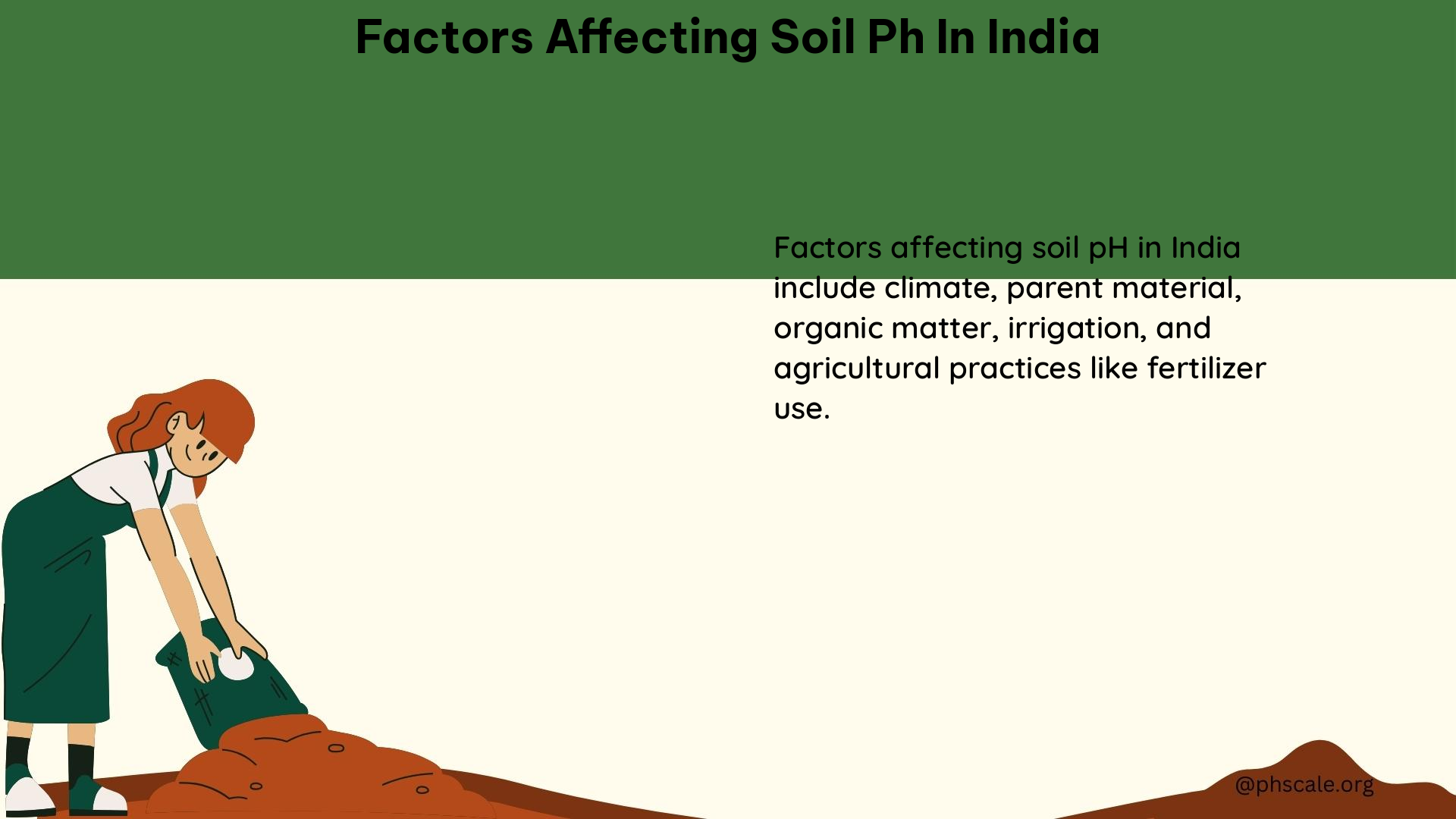The factors affecting soil pH in India are multifaceted and influenced by various environmental and anthropogenic factors. From climate and mineral content to soil texture and human activities, these elements play a crucial role in determining the pH levels of the country’s diverse soils. Understanding these factors is essential for maintaining soil health, optimizing crop growth, and ensuring sustainable agricultural practices.
Climate Factors
Rainfall
High rainfall in regions like the humid southwestern, northeastern, and Himalayan regions contributes to soil acidification. Water combines with carbon dioxide to form carbonic acid, which releases hydrogen ions, replacing calcium ions and increasing soil acidity.
Temperature
Temperature affects the intensity of leaching and weathering of soil minerals. In warm, humid environments, soil pH decreases over time due to acidification.
Mineral Content

Parent Material
The minerals present in the parent material of the soil influence its pH. For example, soils formed from limestone or dolomite tend to be alkaline, while those formed from granite or sandstone are more acidic.
Mineral Weathering
Weathering of minerals in the soil affects pH levels. In regions with high rainfall, minerals are leached, leading to acidification.
Soil Texture
Clay Content
Soils with high clay content are more resistant to changes in pH due to their higher buffering capacity. Sandy soils, on the other hand, have a lower buffering capacity and are more susceptible to acidification.
Organic Matter
Soil organic matter content also affects pH levels. Soils with high organic matter content tend to be more acidic, while those with low organic matter content are more alkaline.
Anthropogenic Factors
Nitrogen Fertilizers
The use of nitrogen fertilizers, especially in intensive farming practices, contributes to soil acidification. Nitrogen sources release hydrogen ions, which replace calcium ions and increase soil acidity.
Industrial Activities
Industrial activities, such as the release of pollutants and acid rain, can also contribute to soil acidification.
Regional Variations
Northeastern Region
The northeastern region of India has a high percentage of acidic soils, with approximately 95% of the soils in this region being acidic.
Himalayan Region
The Himalayan region also has a significant proportion of acidic soils due to high rainfall and leaching of minerals.
Impact on Crop Growth and Carbon Sequestration
Crop Growth
Acidic soils can reduce crop growth and productivity by limiting the availability of plant nutrients and predisposing plants to biotic and abiotic stress factors.
Carbon Sequestration
Soil acidification can lead to the loss of soil inorganic carbon, which is an important carbon pool. This loss can affect the ability of soils to regulate nutrient levels, foster plant growth, and store carbon.
Solutions and Alternatives
Liming
Applying lime to acidic soils can help raise the pH and reduce acidity.
Organic Amendments
Adding organic matter to soils can help improve their buffering capacity and reduce acidification.
Sustainable Agriculture
Practicing sustainable agriculture methods, such as crop rotation and reduced nitrogen fertilizer use, can help minimize soil acidification.
References:
– Zhang et al. (2019) – Factors affecting variations of soil pH in different horizons in hilly regions.
– Down To Earth (2024) – Acidification may strip Indian soils of 3.3 billion tonnes of essential carbon, affecting crop growth, sequestration.
– UNL CropWatch (2014) – Inherent Factors Affecting Soil pH.
– Mosaic Crop Nutrition (n.d.) – Soil pH | Nutrient Management.
